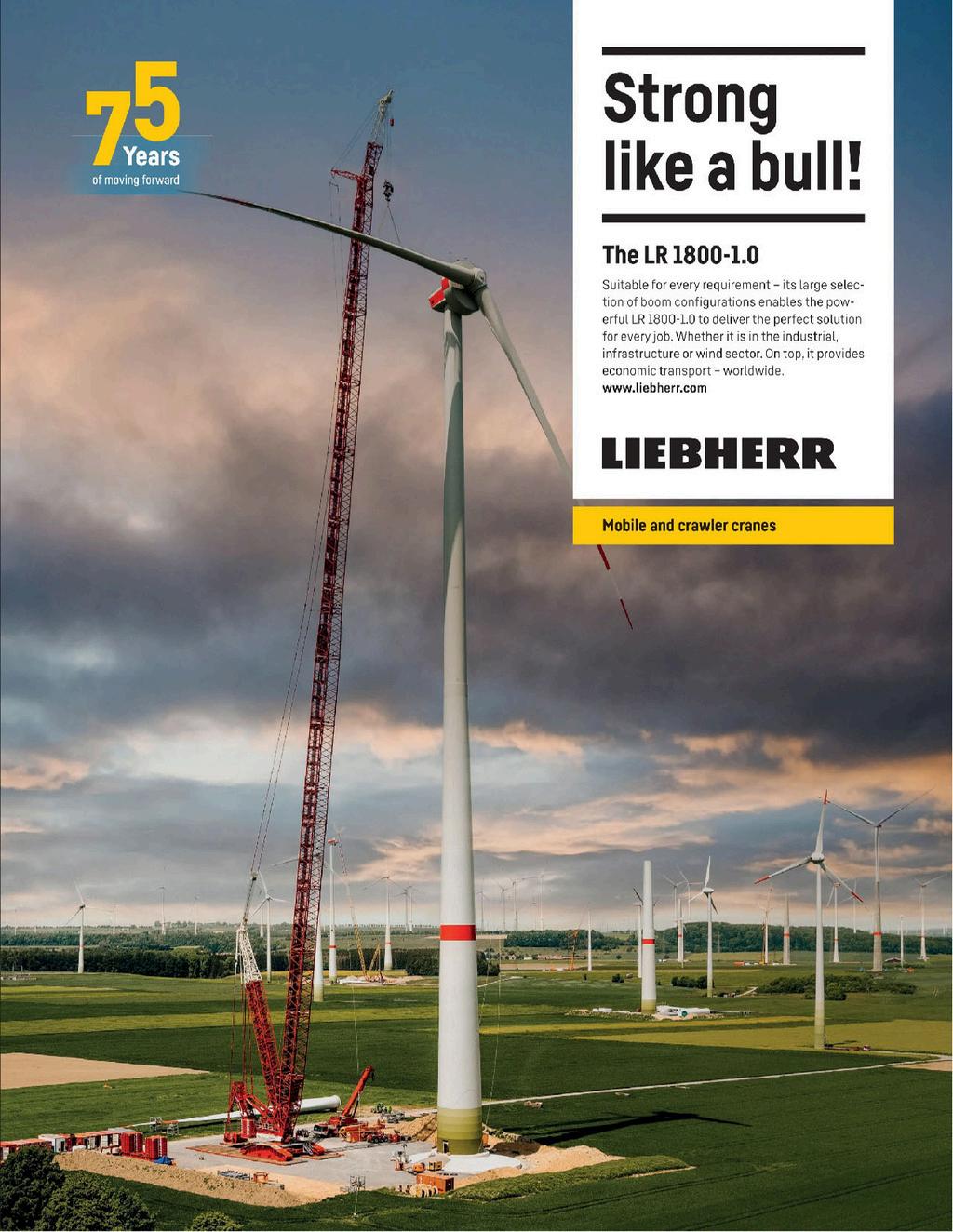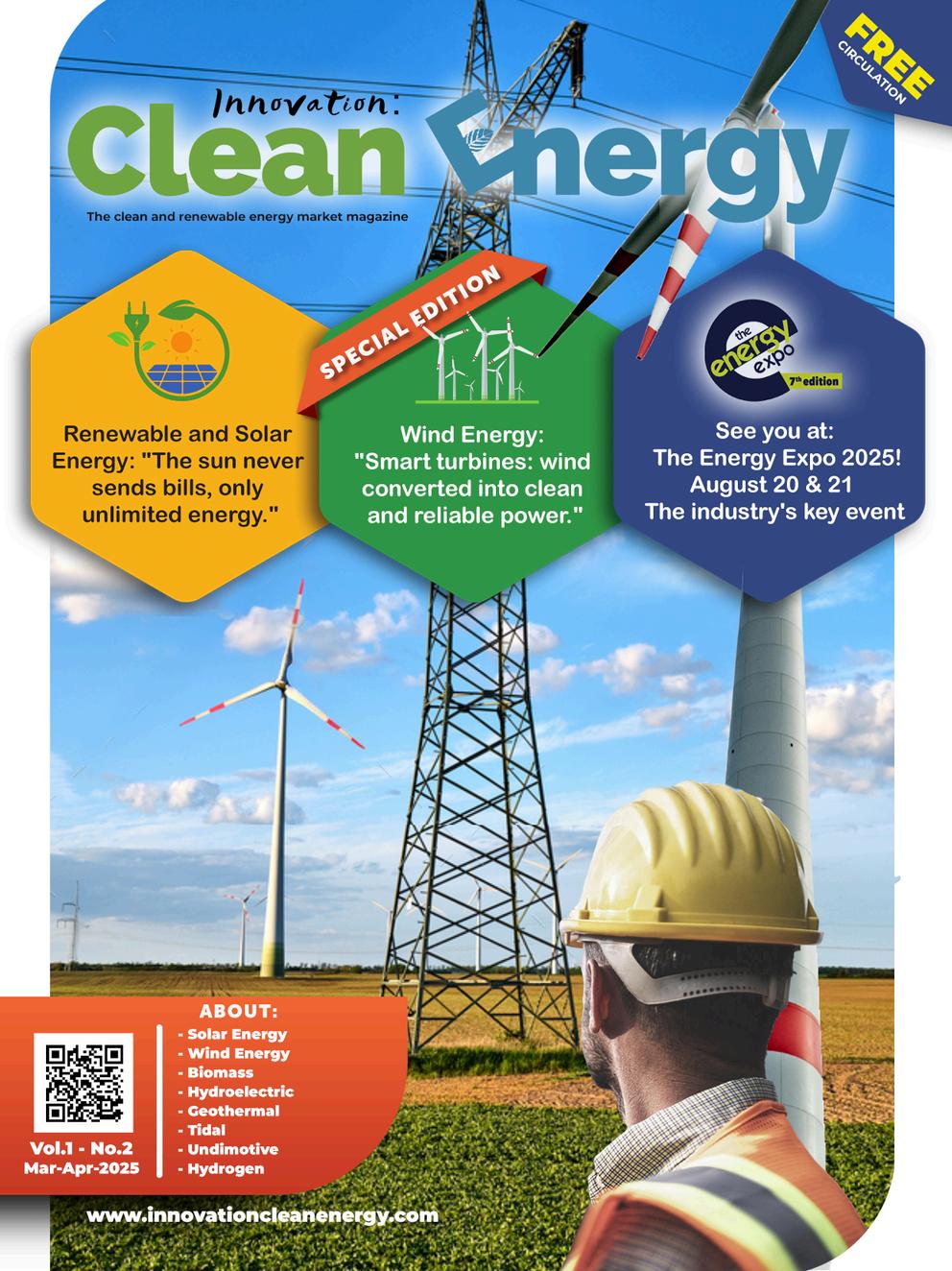
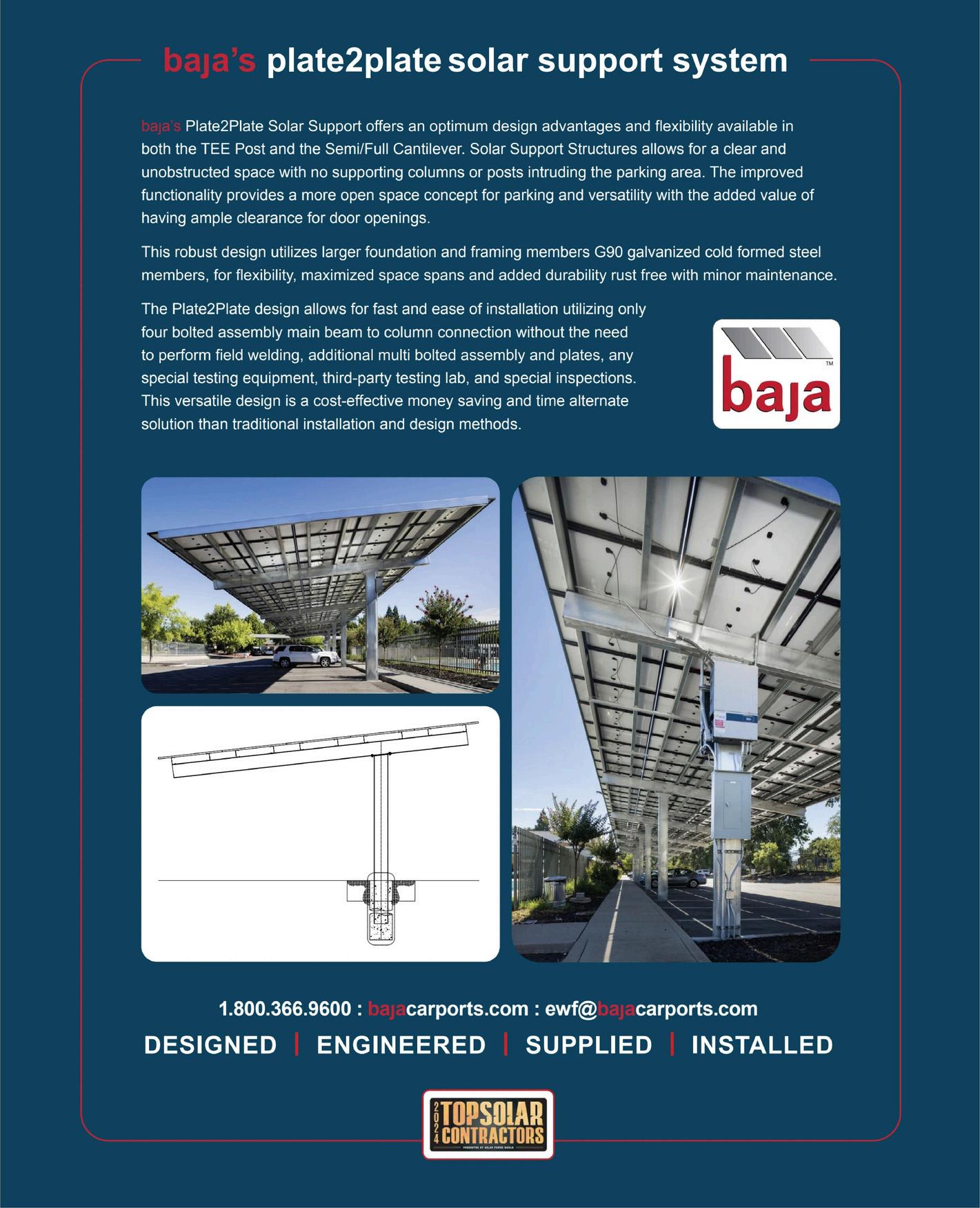
By: FRANK LONDON - editor@innovationcleanenergy com
MAR/APR, 2025



By: FRANK LONDON - editor@innovationcleanenergy com
MAR/APR, 2025

The year 2025 marks a before and after in the clean energy industry. With unprecedented technological advancements, growing global investment, and an increasing commitment to the energy transition, this year stands as a turning point for the renewable sector. In this transformative landscape, Innovation: Clean Energy positions itself as a key player, strengthening strategic alliances and elevating the conversation to new heights.
In this edition, we focus on Wind Energy, one of the most dynamic and fastest-growing technologies worldwide Wind power is redefining the energy future with innovative projects, record-breaking investments, and a crucial role in global decarbonization. From onshore wind farms to the massive expansion of offshore wind, this industry proves that wind not only drives turbines but also propels the shift towards a more sustainable planet.
Furthermore, Innovation: Clean Energy continues to expand its reach and create valuable connections with key industry players. A clear example of this is our partnership with Expo Energy 2025, which will hold its seventh edition in Fort Lauderdale this August This event has established itself as an essential platform for business, innovation, and networking in the renewable energy sector, and being part of it reaffirms our commitment to the industry
Every page of this edition has been designed to inform, inspire, and connect. We analyze the most impactful trends, explore the opportunities that will shape the energy future. Our goal is for this magazine to serve as a strategic tool for companies, investors, and visionaries who understand that the future is now.
Join us on this journey through the infinite potential of wind energy and the world of renewables Change is not only possible it is unstoppable And together, we are building it Welcome to Innovation: Clean Energy Vol. 1 - No. 2.
Frank London Editor Associate
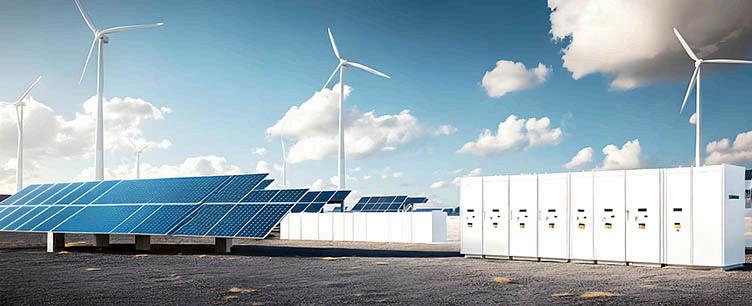
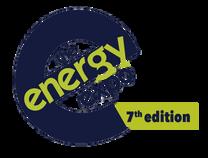
March, 2025
The 7th edition of the event will bring together key players from the industries, sub-industries, and sectors related to energy across the Americas.
The Energy Expo has announced that its 7th edition will take place from August 20-21 at the Broward County Convention Center in Fort Lauderdale, Florida. The event will showcase the latest innovations, products, and educational programming for professionals in areas such as solar energy, energy storage and distribution, clean energy, and smart technology.
The gathering will feature more than 100 exhibitors and a record number of sponsors, along with a comprehensive educational program led by over 60 renowned experts in the field. Attendees can expect high-level keynote sessions, specialized panels, accredited courses, and live demonstrations on solar energy technologies, energy storage, EV charging, energy distribution, energy efficiency, and clean technologies.
This new edition will take place at a convention center in a strategic location, near a major international airport, hotels, restaurants, beaches, and a cruise terminal. The venue aims to attract not only visitors from the U.S. but also attendees from Latin America and the Caribbean, further solidifying its role as an internationally recognized event.
"The Energy Expo is an opportunity for professionals from Latin America and the Caribbean to access innovative solutions and connect with global suppliers looking to expand in the region”, said José García, President and CEO
New Phone Generation
In this regard, Latin America heavily relies on importing equipment and technologies to meet its energy sector needs Within this context, The Energy Expo establishes itself as a strategic platform where industry players from Latin America and the Caribbean can strengthen business relationships with manufacturers from North America, Asia, and Europe
The CEO emphasized that “in addition to buying and learning in the United States, industry professionals from Latin America and the Caribbean will have the opportunity to showcase their products, developments, achievements, and needs with the prominence they deserve, within a friendly and multicultural environment”
The Energy Expo continues to establish itself as the leading event for the Clean Energy industry in the Americas Expanding its reach by incorporating manufacturers and experts from around the world, it strengthens its marketing platform with new resources and specialized tools By presenting the latest innovations, the expo provides an ideal environment to network, learn, and engage in each participant’s language, reaffirming its commitment to the industry's growth
Stay connected with The Energy Expo through our website and follow us on Facebook, Instagram and LinkedIn

The New Era of Clean Energy: Connect with the Green Revolution
The world is changing, and so is the way we generate and consume energy The demand for sustainable solutions is at an all-time high, driven by a global urgency to reduce carbon footprints, optimize energy efficiency, and transition toward a cleaner, more profitable economic model. In this scenario, Innovation: Clean Energy stands out as more than just a magazine we are the epicenter of the energy revolution, the bridge connecting visionaries, business leaders, and innovators with real opportunities for growth and success.
Innovation: Clean Energy offers you the perfect platform and magazine to:
✅ Increase your visibility among a highly specialized audience committed to the energy transition
✅ Access investment and collaboration opportunities with the most influential players in the sector.
✅ Position your brand as a sustainability leader, setting yourself apart in an increasingly competitive market
✅ Connect with potential clients and strengthen your network in a constantly evolving ecosystem
2025 is a pivotal year for the industry, and at Innovation: Clean Energy, we are ready to drive the transition
Now, it’s your turn. Are you ready to be part of the change?
We invite you to join our community whether as an advertiser, collaborator, or strategic partner Together, we can accelerate the adoption of clean and renewable energy, create new business opportunities, and strengthen a more sustainable and resilient sector
The future is clean, profitable, and already here. Don’t get left behind Contact us today and be part of the energy revolution with Innovation: Clean Energy.

Each edition of Innovation: Clean Energy is a key tool for businesses and leaders looking to make informed decisions in a rapidly advancing industry Our platform and magazine provide:
// MARKET TRENDS
Real-time analysis of energy policies, green financing, and government incentives
The most disruptive advancements in solar, wind, storage, and energy efficiency // TECHNOLOGICAL INNOVATIONS // SUCCESS STORIES
Companies that have revolutionized the industry and how they did it
Key events, international trade fairs, and unmissable opportunities // GLOBAL COVERAGE

Wind energy is no longer an emerging alternative; it has become a key pillar in the global energy mix With technological advancements and increasing investment in infrastructure, large-scale wind farms are transforming the way the world generates and consumes electricity
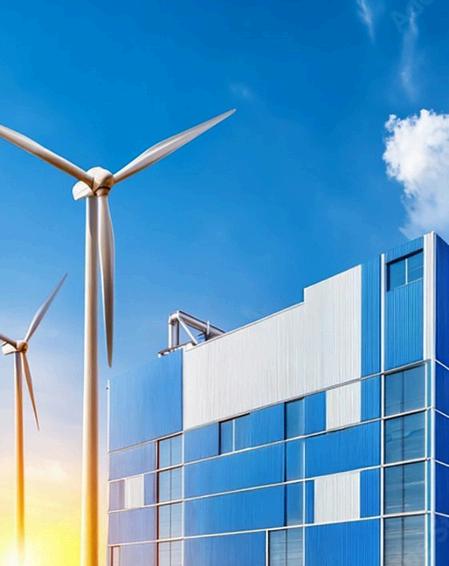
This growth is driven not only by the need to decarbonize the economy but also by the competitiveness of wind energy compared to fossil fuels. According to the International Renewable Energy Agency (IRENA), onshore wind energy is now one of the cheapest sources of power generation, with production costs as low as $30/MWh in competitive markets.
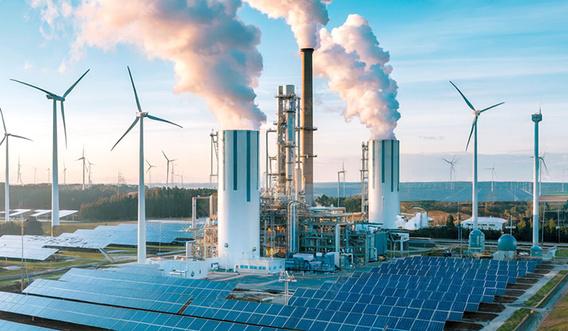
• KEY WIND ENERGY GROWTH DATA:
✔ In 2023, global wind capacity reached 906 GW, with a year-on-year growth of 9% (Source: IRENA, 2024)
✔ China, the U S , and Europe lead wind energy development, accounting for over 75% of new installed capacity in 2023 (Source: BloombergNEF, 2024)
✔ Offshore wind energy is experiencing an unprecedented boom, with projected growth of 235% by 2030 (Source: IEA, 2024)
For wind energy to continue its expansion, efficient infrastructure is essential to support the installation and operation of largescale wind farms. This includes not only the manufacturing and assembly of wind turbines but also electrical transmission networks, storage systems, and policies for grid integration.

✔ Next-Generation Wind Turbines: Larger and more efficient turbines with capacities of up to 16 MW per unit (Example: Vestas V236-15.0 MW)
✔ Transmission Networks: Investments in interconnectors and high-voltage lines to transport energy from high-wind potential areas.
✔ Storage Systems: Integration with batteries and technologies like green hydrogen to enhance grid stability
✔ Logistics and Transportation: Moving turbines over 120 meters high requires specialized solutions
✔ Regulation and Permits: Approval for new projects can take between 3 to 7 years, depending on the country
✔ Environmental and Social Impact: Planning must consider impacts on local communities and ecosystems
//01GANSUWINDFARM(CHINA)
Installed capacity: Over 10 GW
One of the largest wind farms on the planet, with more than 7,000 turbines in operation.
//02DOGGERBANK(UNITEDKINGDOM)
Location: North Sea
Projected capacity: 3 6 GW
Will be the world's largest offshore wind farm once completed in 2026
//03SERRABRANCA(BRAZIL)
Installed capacity: 2 4 GW
One of the most ambitious wind energy projects in Latin America
Wind energy growth is unstoppable By 2050, more than 50% of global electricity is expected to come from renewable sources, with wind and solar leading the transition
//KEYFUTURETRENDS:
✔ Hybridization with Solar Energy: Projects that combine both technologies for greater efficiency.
✔ Floating Wind Technology: Expansion of floating turbines in deep waters, unlocking new wind resources.
✔ Hydrogen Storage: Using wind energy surpluses to produce green hydrogen
//CONCLUSION:
Wind energy is transforming the global energy sector, driving both sustainability and economic growth. The question is not if it will lead the transition, but how quickly we can accelerate its expansion.
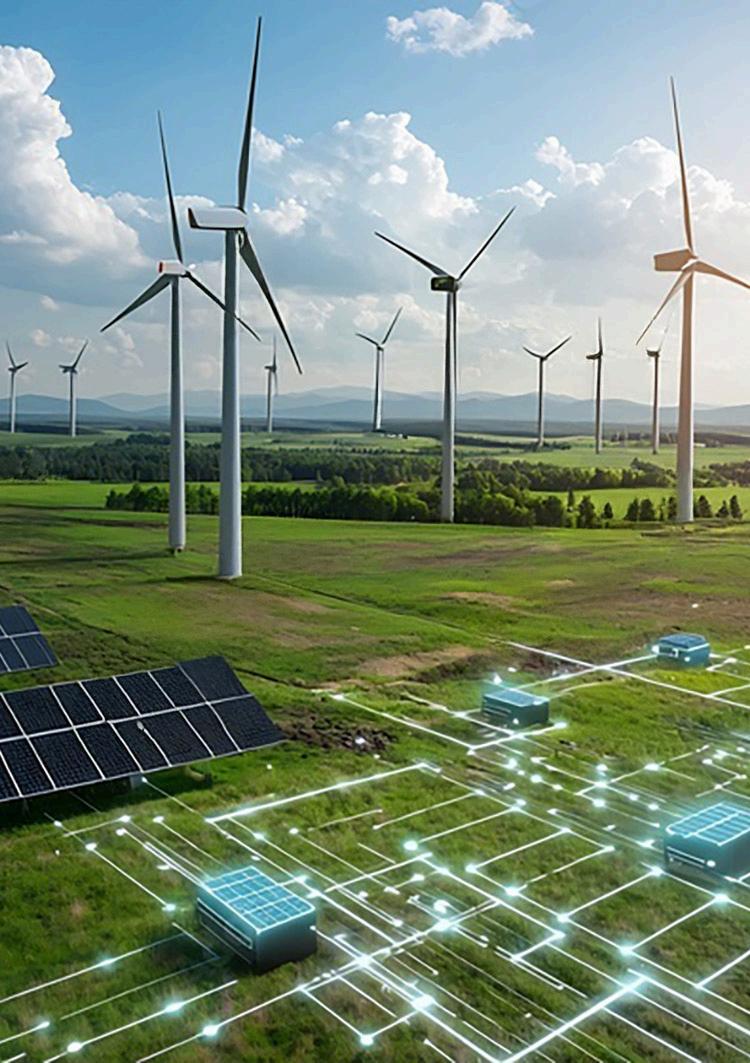


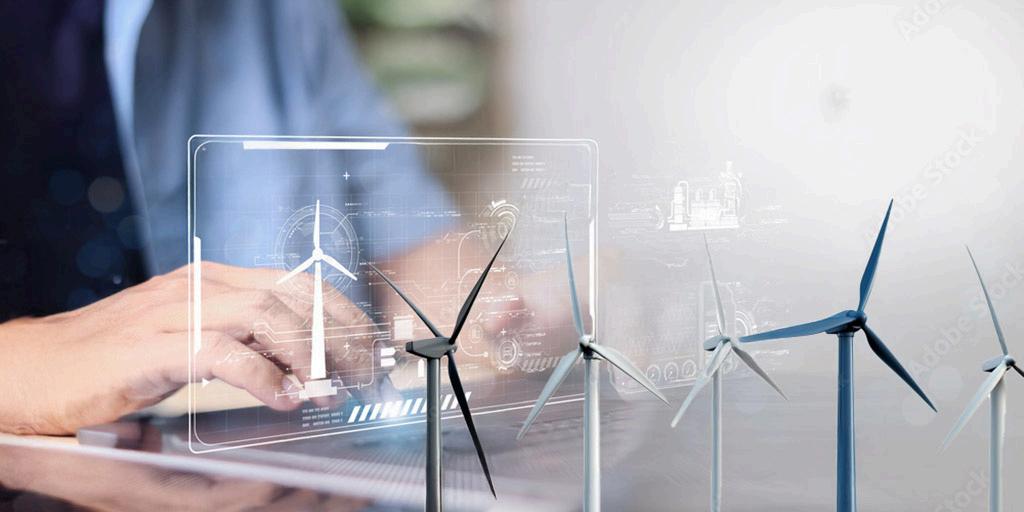
//ADVANCEMENTS IN WIND ENERGY: MORE POWER, LOWER COSTS
Wind energy has evolved significantly in recent years, driven by innovations in turbine design, more efficient materials, and digitalization These advancements have made energy production more cost-effective than ever, with larger, more powerful, and more accessible turbines for various environments

Key Data on Wind Energy Profitability:
The Levelized Cost of Electricity (LCOE) for onshore wind power has decreased by 68% since 2010. Modern turbines can generate up to 16 MW per unit, reducing the number of wind turbines needed per park. (Example: Vestas V23615.0 MW)
In 2023, global wind capacity reached 906 GW, and it is expected to exceed 1,500 GW by 2030.

//MORE EFFICIENT AND POWERFUL TURBINE DESIGNS
Wind turbines have grown not only in size but also in efficiency and production costs The main innovations include:
// Large-Scale Wind Turbines: ✔
Taller Towers and Longer Blades: Turbines exceeding 260 meters capture more energy in low-wind areas.
Example: GE Haliade-X 14 MW, where a single blade rotation can power a house for two days.
// Modulars and Advanced Materials: ✔
New blades made of carbon fiber and recyclable resins increase lifespan and reduce maintenance costs
Lighter designs reduce transportation and logistics expenses EFFICIENCY & DESIGN
// Direct Drive Turbines: ✔
Eliminate traditional gearboxes, reducing mechanical failures and maintenance
Higher energy efficiency with fewer moving parts
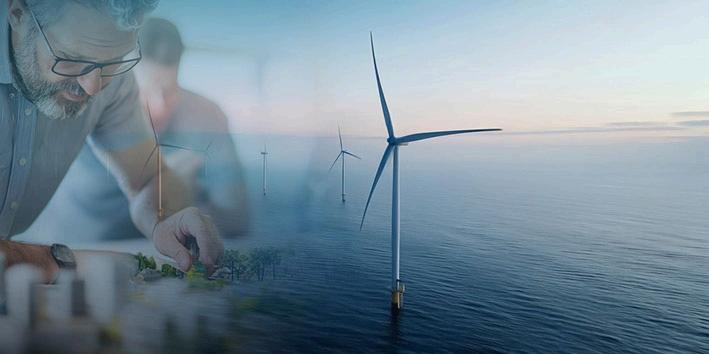
Technological innovations have significantly reduced the costs of installing and operating wind farms
• KEY FACTORS IN COST REDUCTION:
EFFICIENT
Mass production of turbines with less material waste
Less time and resources required to build wind farms.
AI and IoT sensors detect failures before they occur.
Example of Cost Reduction:
In 2020, the average wind energy installation cost in the U S was $1,500/kW By 2024, technological advances have reduced this cost by 20%, making it even more competitive against fossil fuels
The development of more efficient and costeffective wind turbines is accelerating the global energy transition. As technology advances, costs will continue to drop, making wind energy even more competitive in the market.
Offshorewindenergyisthefuture,especiallywithfloating turbinesharnessingstrongerwindsindeepwaters
• KEY OFFSHORE WIND DATA:
The sector is expected to grow 235% by 2030, with investments exceeding $800 billion.
Pioneering projects like Hywind Scotland have proven that floating turbines can be a viable alternative for deep-water regions
Floating wind turbines can be installed in deeper waters, unlocking vast new areas for energy generation.
Example of Floating Turbines:
WindFloat Atlantic, the world's first semisubmersible floating wind farm It is located off the coast of Portugal and began operating in 2020 It uses technology developed by Principle Power and features 8 4 MW turbines
Wind turbines are essential for the energy transition, but their efficient operation depends on constant monitoring. With smart sensors, the Internet of Things (IoT), and Artificial Intelligence (AI), it is now possible to detect failures early, optimize performance, and reduce operational costs.
// KEYDATAONWINDTURBINEMONITORING:
Predictive maintenance can reduce mechanical failures by 50% (Source: IRENA, 2024)
AI-driven data analysis can increase energy production by 8%. (Source: BloombergNEF, 2024)
IoT-based anomaly detection prevents unexpected shutdown losses and cuts maintenance costs by up to 30%.
// IOTSENSORS:THEFOUNDATIONOFWIND TURBINEMONITORING
Real-time monitoring relies on strategically placed sensors that collect data on turbine performance and condition
Types of Sensors Used in Wind Turbines:
Vibration sensors: Detect bearing, gearbox, and shaft failures before they occur
Temperaturesensors:Warnofoverheatingingeneratorsandbrakes.
Electronic anemometers and wind vanes: Measure wind speed and direction in real time to optimize blade angles
Torque and load sensors: Monitor structural stress under extreme conditions
Real-World Example:
Vestas Wind Systems has implemented IoT sensors in its turbines to detect structural anomalies with 95% accuracy, reducing unplanned downtime and extending equipment lifespan

// ARTIFICIALINTELLIGENCEANDBIG DATAINPREDICTIVEANALYSIS

AI processes the vast amount of data collected by sensors to anticipate problems and optimize operations.
Key AI Applications in Wind Turbine
Monitoring:
Predicting Mechanical Failures: AI analyzes vibration and temperature patterns to detect wear in key components
Performance Optimization: Algorithms dynamically adjust blade orientation and speed for maximum wind capture.
Maintenance Cost Reduction: Repairs can be scheduled before critical failures occur, avoiding costly emergency interventions
Case Study:
Siemens Gamesa uses advanced neural networks to analyze turbine data worldwide This has reduced wind farm downtime by 20%.

//INTEGRATIONWITHSMARTGRIDS ANDENERGYSTORAGE
Real-time monitoring not only optimizes individual turbine performance but also enhances integration with smart grids and storage systems
Benefits of Smart Grid Integration:
Better management of intermittent wind energy
Efficient storage of excess power
Automated electricity redistribution based on demand.
Implementation Example:
Denmark has developed an intelligent control system that automatically adjusts wind energy production according to national consumption, storing surplus power in largescale batteries and minimizing energy waste
(Source: Danish Energy Agency, 2024)
//THEFUTUREOFWINDTURBINE MONITORING
New technologies are continuously improving wind turbine efficiency and durability
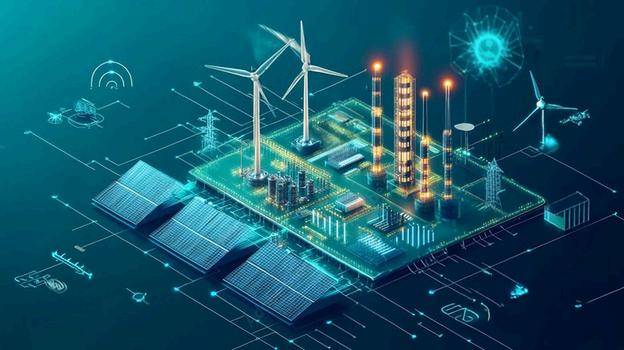
Trends for the Coming Years:
AI-powered drones for remote turbine inspection
Blockchain for maintenance and energy generation traceability.
Autonomous turbines with machine learning-based self-adjustment
Real-time monitoring is revolutionizing wind energy, paving the way for a more t


Building-Integrated
Photovoltaic (BIPV) systems represent an innovative solution for generating clean energy without compromising architectural aesthetics or functionality Incorporating solar panels into windows, facades, and roofs maximizes the use of available space while enhancing a building’s energy efficiency
// WHAT ARE BIPV SYSTEMS?
BIPV (Building-Integrated
Photovoltaics) are solar panels designed to be structurally and visually integrated into a building's architectural elements Unlike conventional rooftop-mounted systems, these panels become part of the construction itself, replacing traditional materials such as glass, ceramics, or metal
//APPLICATIONSANDBENEFITS
Solar windows: Allow natural light entry while generating electricity through semitransparent photovoltaic cells.
Solar facades: Enhance building energy efficiency by generating power and providing thermal insulation.
Solar roofs: Can be integrated as photovoltaic tiles or continuous surfaces without altering the building’s design
// DATA AND RECOMMENDATIONS
BIPV panel efficiency ranges between 10% and 20%, depending on the technology used.
Installation can reduce a building’s energy consumption by up to 30%. Various countries offer incentives and regulations to promote the use of these systems in sustainable construction.
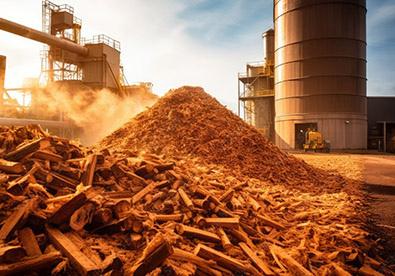
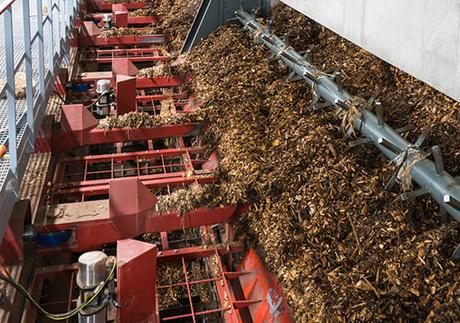
Biomass has established itself as a key renewable energy source in the transition towards a sustainable energy system Derived from organic matter such as agricultural, forestry, and urban waste, Biomass enables the generation of electricity, heat, and biofuels with a significantly lower carbon footprint than fossil fuels
Biomass utilization occurs through processes like direct combustion, gasification, and anaerobic digestion. Combustion generates heat to produce electricity in thermoelectric plants, while gasification converts biomass into a synthetic gas that can be used for energy generation. Anaerobic digestion, on the other hand, produces biogas from organic waste, providing an efficient waste management solution
One of Biomass's main attractions is its ability to reduce CO2 emissions since the carbon released in its use is part of the natural carbon cycle. Additionally, its utilization contributes to sustainable waste management and reduces dependence on fossil fuels Economically, it drives rural development by creating jobs in biomass collection, processing, and distribution, offering opportunities to local communities
Advancements in conversion technologies are improving the efficiency and profitability of Biomass. One example is the development of advanced biofuels, such as second-generation biodiesel and cellulosic bioethanol, which reduce competition with food crops Also noteworthy are improvements in gasification for green hydrogen production and the integration of biomass with carbon capture systems, potentially making it a negative-emission energy source
Efficiency and Capacity
Hydropower surpasses solar and wind in capacity factor, reaching 40-60%
Plants like Three Gorges (22 5 GW) and Itaipú (14 GW) provide grid stability and continuous production
Innovation and Storage
Advanced Kaplan and Francis turbines achieve up to 95%efficiency, while run-ofriver plants minimize environmental impact. Pumped storage, responsible for over 90% of large-scale energy storage worldwide, balances supply and demand effectively.
Environmental Challenges and Adaptation
With up to 30 times lower CO₂ emissions than fossil fuels, hydropower’s impact on ecosystems is a key concern
Technologies like environmental flow turbines and advanced hydrological modeling optimize reservoir management amid climate change
Future and Expansion:
A 17% capacity increase is expected by 2030 through modernization and integration with solar and wind. Digitalization with sensors and big data will enhance efficiency, ensuring a more flexible and reliable power supply.

Hydropower remains the leading renewable source, generating 60% of global clean electricity and 16% of total power worldwide, with over 1,300 GW of installed capacity. China, Brazil, Canada, the U.S., and Russia lead its development.
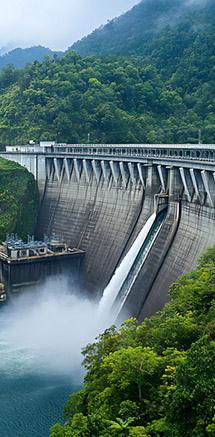
Geothermal energy is a renewable source with high potential for clean and constant generation. It harnesses the Earth's internal heat by extracting steam or hot water from underground to produce electricity or direct heating.
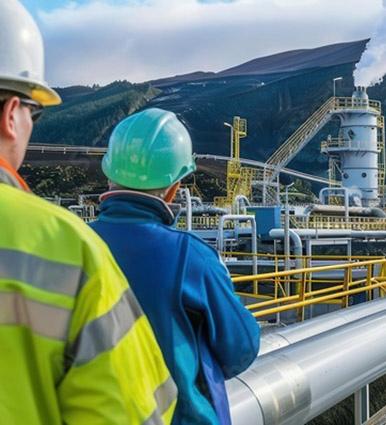

Geothermal plants use deep wells to access high-temperature reservoirs, where the extracted heat drives electricitygenerating turbines. Its capacity factor exceeds 80%, outperforming solar and wind energy, making it a reliable option for continuous power supply Additionally, its carbon footprint is minimal, emitting less than 50g of CO2 per kWh generated, according to the International Renewable Energy Agency (IRENA).
New technologies, such as binary cycle Geothermal systems, allow the utilization of lower-temperature resources, expanding its applicability. Countries like Iceland and Kenya lead its development, with plants such as Hellisheiði and Olkaria generating a significant portion of their electricity from this resource
// WAVE ENERGY
Wave and tidal energy are promising renewable sources with high energy density and predictability, ideal for electricity generation.
// FUNCTIONALITY AND BENEFITS
Wave energy devices convert ocean kinetic energy into electricity, while underwater turbines harness tidal currents Both technologies produce zero emissions and have minimal environmental impact
// INNOVATION AND GROWTH
Centers like EMEC in Scotland test advanced technologies, with projects such as Orbital Marine Power’s O2 turbine. Global capacity is expected to grow by over 30%by2030, driving sustainable energy solutions for coastal regions
// POWER OF THE OCEANS
Tidal energy converts tidal movements into electricity, offering stability compared to intermittent sources like solar and wind power.
// FUNCTIONING AND BENEFITS
Turbines in high tidal flow areas, such as estuaries, generate electricity with zero emissions and minimal visual impact, ensuring environmental integration
// INNOVATION AND GROWTH
France and the UK lead this sector with projects like La Rance and MeyGen With a projected 25% capacity increase by 2030, advanced materials and greater efficiency will drive global expansion


Hydrogen is emerging as a clean and efficient solution in the transition to sustainable energy. Its use in power generation, transportation, and heavy industry positions it as a key pillar in reducing greenhouse gas emissions
Fuel cells convert hydrogen into electricity through an electrochemical reaction with oxygen, producing only water as a byproduct. This highly efficient technology is viable for vehicles and energy storage
Green hydrogen, produced from renewable energy, is expanding due to cost reductions in electrolysis Companies like ITM Power and Nel Hydrogen are developing more efficient electrolyzers, while corporations such as Shell are investing in infrastructure for hydrogen transport and storage.
Its energy storage capacity makes it a strategic solution to mitigate the intermittency of solar and wind power Additionally, it is essential in hard-todecarbonize sectors such as steelmaking and heavy transport
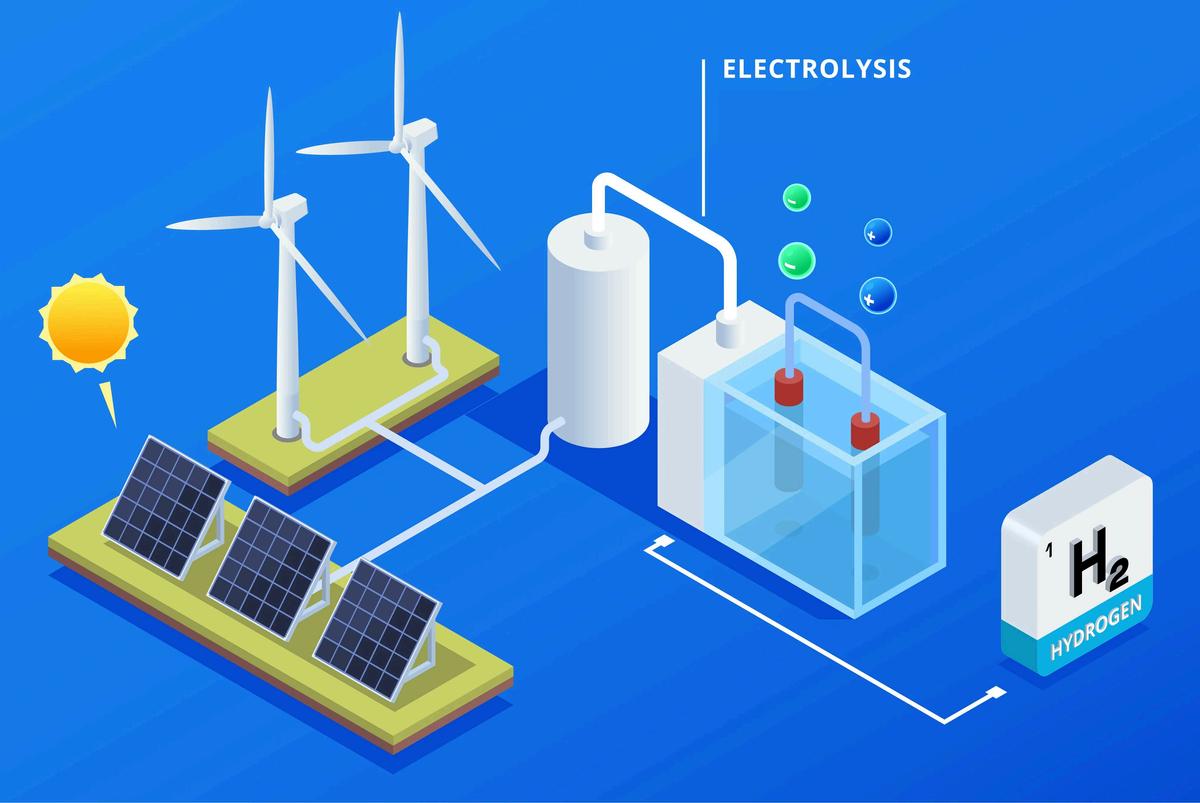
Hydrogen production could grow by more than 50% by 2030, with infrastructure investments in leading countries like Japan, Germany, and Australia. Its accelerated development positions it as a cornerstone of the transition to a clean energy economy

// THE NEED FOR WIND ENERGY IN RURAL AREAS
Access to electricity remains a challenge in many countries Wind energy offers a sustainable alternative to electrify isolated communities, reduce dependence on fossil fuels, and improve rural populations’ quality of life
//KEY FACTS ABOUT RURAL WIND ENERGY:
✔ More than 700 million people worldwide still lack electricity
✔ Small wind turbines can cut diesel fuel consumption in rural communities by 80%
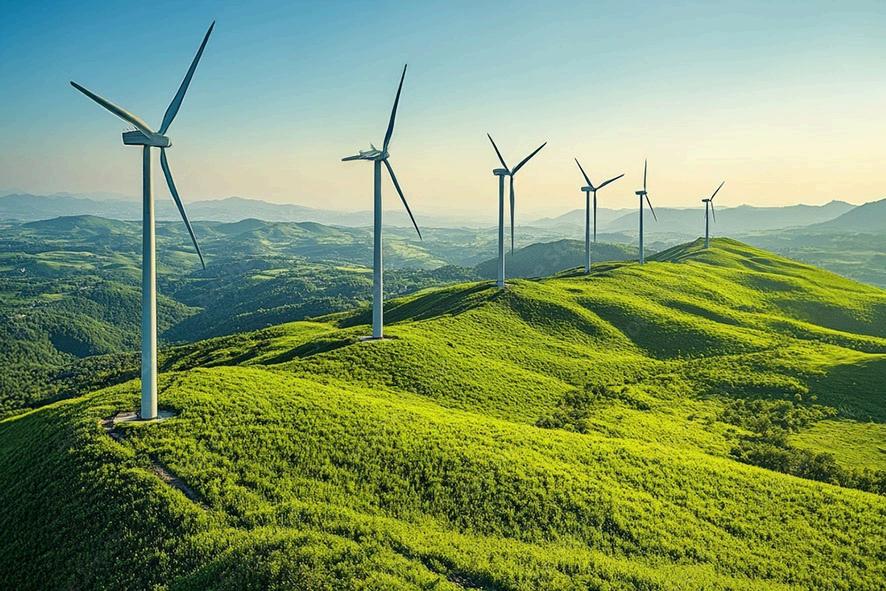
✔ Countries like India, Brazil, and Kenya have successfully implemented decentralized wind energy models (Source: IEA, 2024)
KEY
To make rural wind energy a reality, public policies must support its adoption


Government Incentives and Subsidies
Governments should provide subsidies and funding to small renewable energy producers, lowering the initial costs of wind turbine installations
Legislation for Decentralized Power Grids
Many rural communities are not connected to conventional power grids It is essential to develop regulatory frameworks that allow energy generation and distribution through microgrids powered by wind energy.



Community Participation and Local Ownership Models
Project success depends on local engagement. Energy cooperatives enable communities to manage their own turbines and sell surplus energy to the national grid
Streamlining Permits and Regulations
Policies should ensure fast and accessible administrative processes for setting up rural wind turbines, reducing bureaucracy and regulatory costs
International Renewable Energy Funds
Organizations such as the World Bank, IDB, and UN finance rural electrification projects
Government policies should facilitate access to these funds to maximize wind energy’s impact.

The "National WindSolar Hybrid Policy" has driven the installation of turbines in off-grid villages, benefiting over 1 million people.

The government implemented a green credit scheme for farmers installing small wind turbines, reducing reliance on diesel generators.

The Lake Turkana Wind Power Project has been crucial in electrifying nomadic communities in the country’s north, proving wind energy’s potential in remote areas.

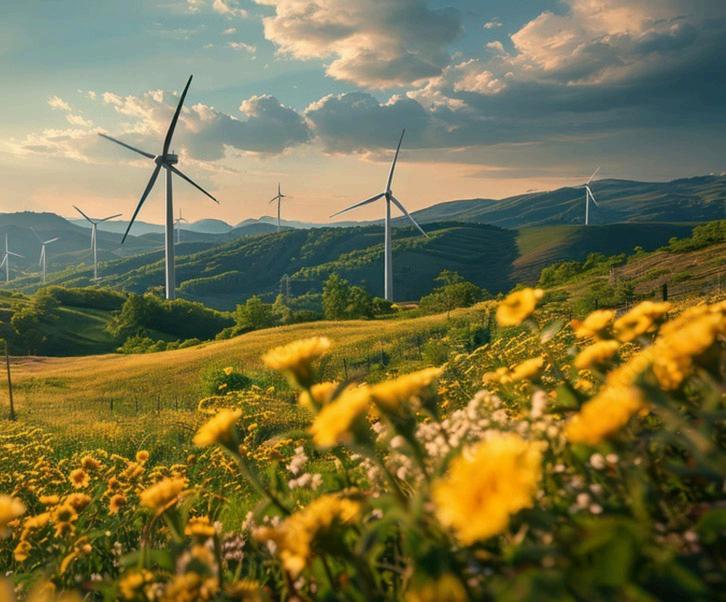
New policies and technologies will enable broader expansion of wind energy in rural communities.
Trends for the Coming Years:
✔ Battery storage solutions to ensure a constant power supply.
✔ AI integration for better energy production and demand management
✔ Greater collaboration between public and private sectors to expand coverage.
The right policies can transform millions of lives, promoting sustainable development through wind energy

//AMARKETONTHERISE
LatinAmericahasbecomeoneofthe fastest-growingregionsforwind energy.CountrieslikeBrazil,Mexico, Chile,andArgentinahave implementedpoliciesandprojects thathavesignificantlyincreased windfarmcapacity.
✔ Installed Capacity: Over 50 GW of operational wind energy in the region.
✔ SteadyGrowth: Expected 10% annual growth in installed capacity through 2030.
✔ Investment: Over $50 billion has been invested in wind farms over the past decade
COST REDUCTION AND TECHNOLOGICAL ADVANCES
The cost of wind turbine installation has decreased by 40% in the last decade, making wind farms more profitable
GOVERNMENT POLICIES AND RENEWABLE ENERGY AUCTIONS
Governments have launched renewable energy auctions, offering incentives to companies developing wind power projects
INCREASED PRIVATE SECTOR PARTICIPATION
Both international and local companies are investing in wind energy to diversify portfolios and meet sustainability goals.
RISING DEMAND FOR CLEAN ENERGY
Governments and industries are shifting to renewables to reduce carbon footprints and meet emission reduction targets.
GEOGRAPHICAL ADVANTAGES
Regions like Argentina’s Patagonia, Mexico’s Isthmus of Tehuantepec, and Northeast Brazil offer strong, consistent winds ideal for large-scale wind farms
TherapidexpansionofLATAM’swindenergy marketpresentssignificantopportunitiesfor renewableenergycompanies,technology providers,andprojectdevelopers.
✔ Market Education: Awareness campaigns on wind energy benefits for investors, governments, and consumers
✔ Green Branding: Positioning companies as leaders in sustainability and clean energy
✔ Digital Marketing & Targeted Ads: Promoting wind projects via specialized platforms and social media
✔ Success Stories & Performance Data: Showcasing results from operational wind farms to attract new investors
The regional leader with over 30 GW of installed wind capacity and a rapidly expanding market
Significant growth in the Isthmus of Tehuantepec, generating over 10% of the country’s electricity.
Rapid expansion with projects in Patagonia and the Atacama Desert, attracting foreign investment.
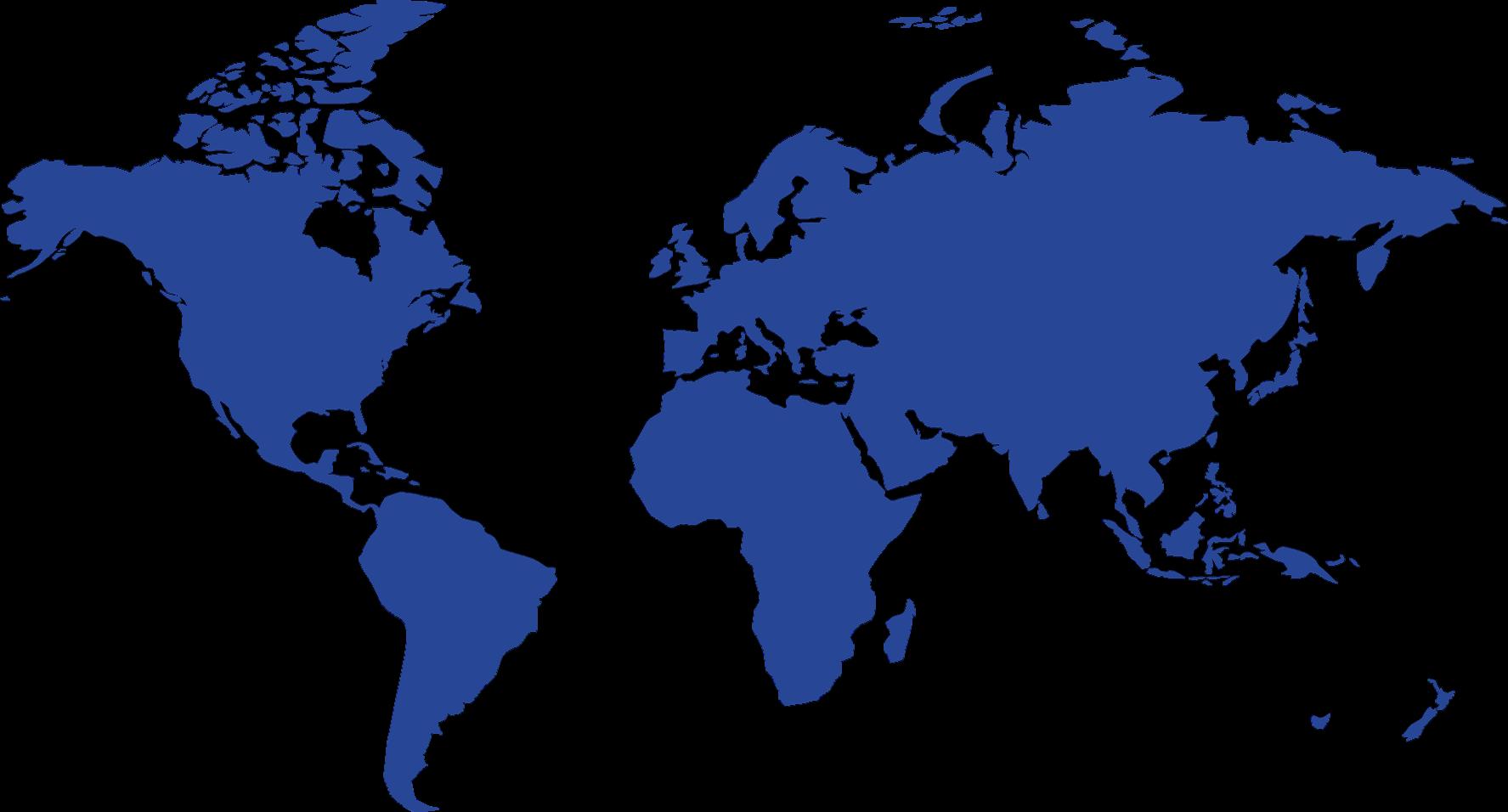
By 2030, Latin America is projected to surpass 100 GW of wind power capacity, with Argentina, Colombia, and Peru experiencing strong growth
FUTURE TRENDS:
PUBLIC-PRIVATE partnerships to finance new wind farms.
DEVELOPMENT OF INFRASTRUCTURE for efficient transmission networks
GRATER INTEGRATION with energy storage for grid stability
LATAM is emerging as a key global wind energy player, with vast business opportunities and growth potential for the renewable energy industry.
The global expansion of wind energy largely depends on innovative financing models and strategic investment schemes. In a context where the energy transition requires substantial capital, understanding the available financing options and how public policies can incentivize investment in renewable energies is crucial to ensuring sector growth
There are various financing schemes that enable wind energy projects, from small community parks to large-scale infrastructure megaprojects
Governments and international organizations have played a crucial role in financing wind projects through tax incentives, grants, and soft loans Some examples include:
Sustainable Development Funds: Programs like those from the World Bank and the Inter-American Development Bank (IDB) offer preferential-rate financing for renewable projects in developing countries
Green Subsidies and Loans: State incentives that facilitate the adoption of clean technologies and encourage carbon emissions reduction.
300"B”.
"Green bonds have financed over $300 billion in renewable projects globally " – BloombergNEF
+5 GW
“PPA agreements in Latin America accounted for more than 5 GW of wind energy."
– Wood Mackenzie
Private investors have increased their interest in wind energy due to its long-term profitability and the growing demand for clean energy. PPPs have proven to be a successful model for executing wind projects in emerging markets
Power Purchase Agreements (PPAs): Long-term contracts where wind energy producers sell electricity directly to private buyers or governments, ensuring financial stability.
GreenBonds: Sustainable financing instruments issued in global financial markets to raise funds for renewable projects
Participatory financing has gained relevance in small and medium-scale wind energy projects Platforms like Trine and Lumo allow citizens to invest directly in wind farms and receive sustainable financial returns.
Wind energy competitiveness has increased significantly in recent years, reducing costs and attracting more investors.
According to the International Renewable Energy Agency (IRENA), onshore wind generation costs have decreased by 70% over the last decade, making it more profitable than fossil fuels in many regions.
Long-Term Benefits: Wind farms require high initial investments, but their low operating costs and stable energy prices ensure solid financial returns over time
Appeal for ESG Investors (Environmental, Social, and Governance): ESG-focused investment funds have increased their capital allocation in wind energy due to its positive impact on CO₂ emissions reduction
Emerging Markets: Latin America, Africa, and Southeast Asia represent significant opportunities for wind energy financing due to their untapped potential and growing electricity demand. Integration with Energy Storage: Combining wind energy with battery storage will enable greater grid stability and new investment opportunities. New Business Models: Digitalization and energy decentralization are driving models like distributed wind energy, where small turbines can directly supply communities or businesses.

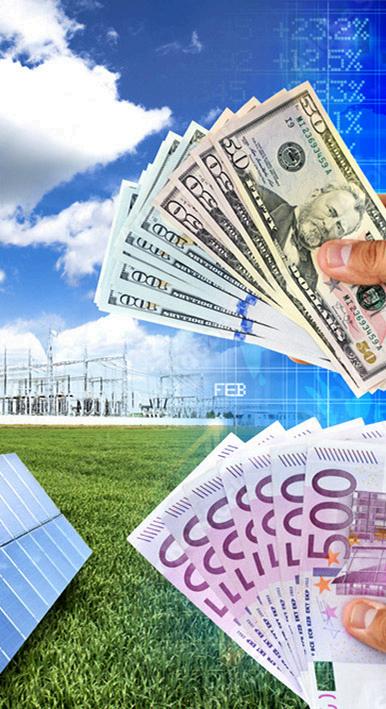
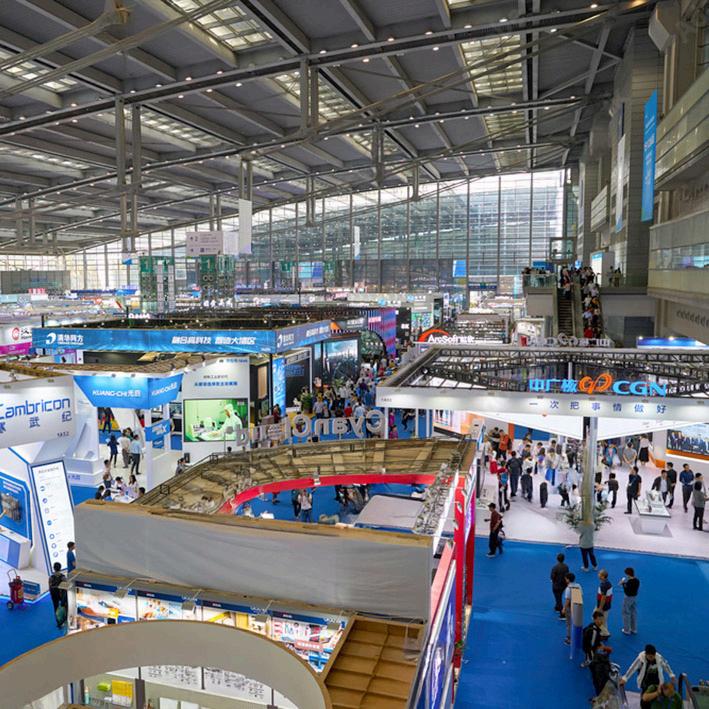



Mar 18-20, 2025 Atlanta, USA

International Biomass Congress and Exhibition
Description: Specialized event for the biomass industry, where the latest innovations and developments in this energy sector are discussed
Exhibitors: Over 100 companies in the Biomass sector
Date: April 7-9, 2025 Copenhagen, Denmark

Annual Event 2025
Description:OrganizedbyWindEurope, thiseventbringstogetherwindindustry professionalstodiscusstechnological advances,policiesandbusiness opportunitiesinthesector
Exhibitors:Windturbinemanufacturers, componentsuppliers,onshoreandoffshore windsystemdevelopers,andcompanies offeringservicesrelatedtowindenergy,
March 21–23, 2025 Indore, India

Solar Asia Expo 2025
Description: International exhibition that gathers professionals and companies from the photovoltaic sector and products related to solar energy
Exhibitors: Companies, photovoltaic panel manufacturers, energy storage solution providers, and solar project developers

April 15-16, 2025
Mexico City, Mexico
Renovables Latam 2025
Description:Aneventthatbrings togetherexpertsandcompaniesin therenewableenergysectorin LatinAmerica,withexhibitionsand conferencesontrendsand technologies
Exhibitors:Over150companiesin therenewableenergyindustry
Tobeconfirmed(inApril)
Daegu, South Korea

Description:GreenEnergyExpoisa renewableenergyfaircovering technologieslikephotovoltaics,solar thermal,wind,fuelcells,hydrogen, biomass,hydro,geothermal,andmore
Exhibitors:Companiesandorganizations offeringsolutionsinvariousrenewable energyandcleantechnologyareas
Oct 16-18, 2025
Bogotá, Colombia

Description: A fair focused on thermal and photovoltaic solar energy, LED lighting, energy efficiency, and electric mobility
Exhibitors: Over 100 companies in the renewable energy sector
May 6 to 8, Valladolid, Spain

Description:Internationalfairfocused onbiomasstechnologies,wherethelatest innovationsandsolutionsforbiomass energyusearepresented
Exhibitors:Biomassboiler manufacturers,solidbiofuelandpellet suppliers,distributorsandinstallersof biomass-basedheatingsystems,forestry machinerycompanies,andcompanies offeringservicesrelatedtobioenergy.

May 7–9, 2025 Munich, Germany
Description:IntersolarEuropeisthe world’sleadingexhibitionforthe solarindustry,focusingon photovoltaics,solarthermal technologies,solarpowerplants,and renewableenergyintegration solutions
Exhibitors:Over1,300exhibitors,including manufacturers,suppliers,distributors
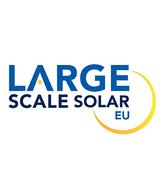
March 25–26, 2025
Lisbon, Portugal
Description: Focuses on solutions to overcome barriers in large-scale solar energy deployment, such as grid congestion and permitting bottlenecks
Exhibitors: Participants include developers, independent power producers (IPPs), policymakers
June 10-12, 2025
Medellín, Colombia

Description:International EnergySecurityFairfocusedon solutionsandtechnologiesfor theenergyindustry
Exhibitors:Over200companies intheenergyandindustrial securitysectors
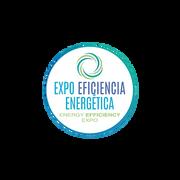
September 11-13, 2025 Buenos Aires, Argentina
Description:Internationalexhibitionthat bringstogethercompanies,institutions,and publicandprivateorganizationsforthree daystopresentthelatesttechnological advancementsinenergyrationaluse, sustainabledevelopmentinArgentina
Exhibitors:Over400companiesinthe energyefficiencyandrenewableenergy sector
Nov 5-7, 2025
Santiago de Chile, Chile
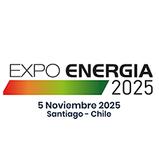
Description: A fair that gathers entrepreneurs and executives from the mining, energy, and industry sectors, focused on energy technologies and solutions.
Exhibitors: Over 300 companies in the energy and technology sectors

June 26-28, 2025
Nairobi, Kenya
Description:Exhibitionthatbrings togetherexpertsandcompaniesinthe energysectortodiscussopportunities andchallengesintheAfricanrenewable energymarket
Exhibitors:Manufacturersofpower generationanddistributionequipment, suppliersofautomationsolutionsandenergy storagesystems,renewableenergyproject developers,andservicesrelatedtoenergy efficiencyandelectricaltechnologies

September 22-24, 2025
Mexico City, Mexico

November 4-6, 2025
Madrid, Spain
Description: An event that brings together industry leaders in clean energy, with exhibitions and conferences on renewable energy and sustainability
Exhibitors: Over 500 companies in the renewable energy and sustainability sectors
Description:InternationalEnergy andEnvironmentFairthatbrings togetherprofessionalsandcompanies intheenergysectortopresentthe latestinnovationsinrenewable energy,energyefficiency,and sustainability.
Exhibitors:Over500companiesin theenergyandenvironmental sector
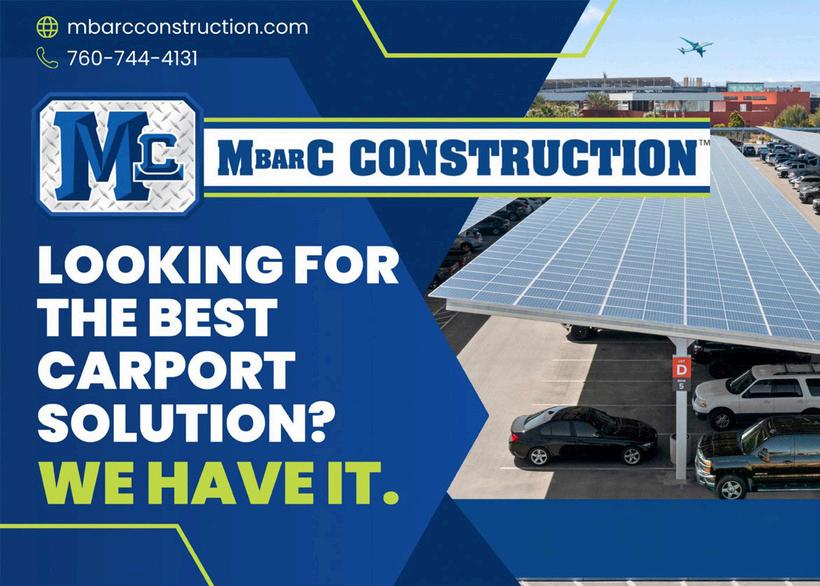
ProjectStartorPlan
TheGuayepoI&IISolarP commercialop December2024andi operational,supplying Colombia’sNationalInter System.(en
ProjectTypeor Itisaphotovoltaic dedicatedtogenerating fromrenewab
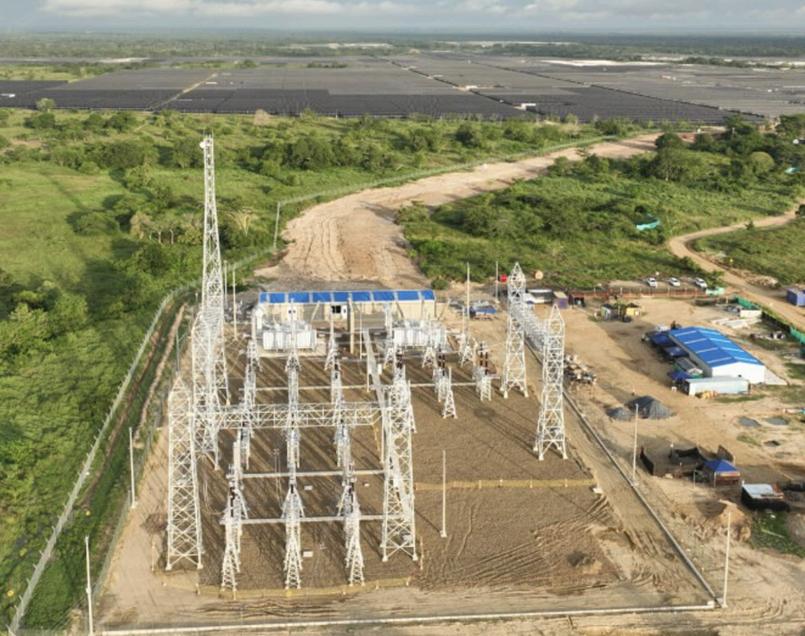
Achieved Project Benefits:
General Project Description: Locatedinthemunicipalitiesof PonederaandSabanalarga,inthe Atlánticodepartment,theparkhas aninstalledcapacityof4867 megawattsindirectcurrent (MWdc)andconsistsofmorethan 820,600interconnectedsolar panelsoveranareaofmorethan 1,110hectares
Investment:
Thetotalinvestmentinthe projectexceeded$290million.
Itproducesapproximately1,030 gigawatt-hoursperyear(GWh/year) -During its construction, more than 50,000 fauna species and around 7,000 flora specimens were rescued and relocated
More than 3,000 jobs were generated
Capacity & Infrastructure: 486.7 MWdc.
More than 820,600 units
More than 1,110 hectares, equivalent to approximately 2,000 football fields
